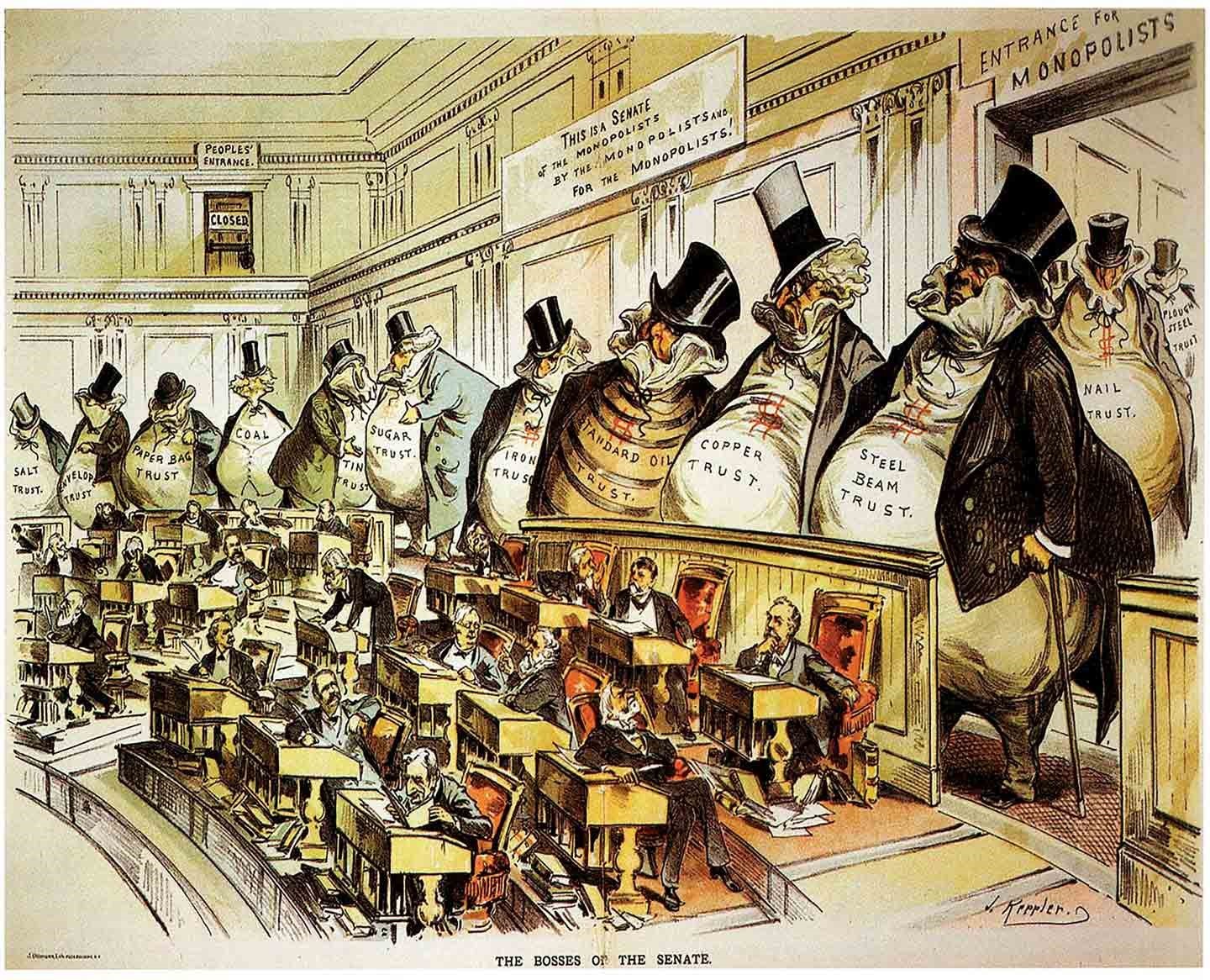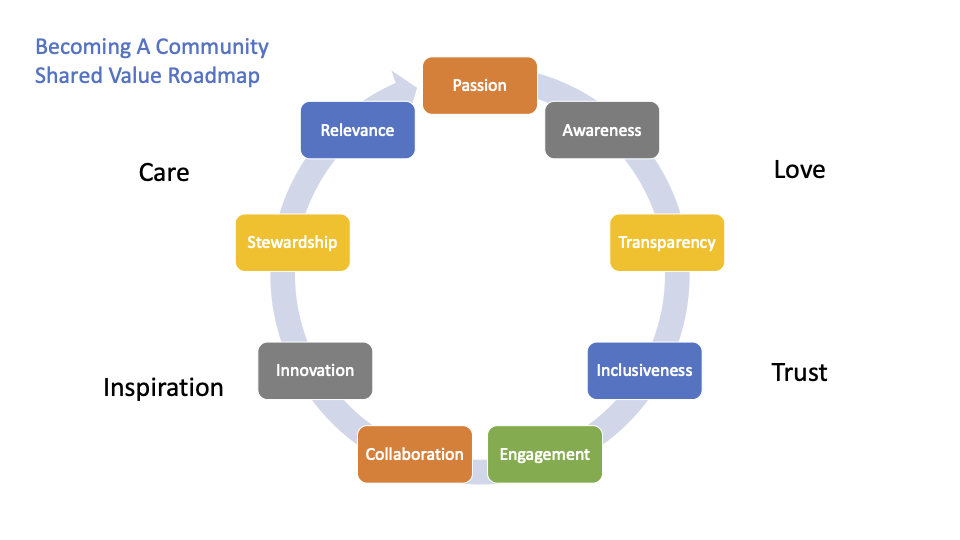
Travel is about embarking on a journey. Building a destination and telling its story is also a journey. And embracing the challenge and making that journey can make our destinations stronger and our stories richer.
When I started writing this blog post I was trying to answer the question that recently crossed my mind - Why do we still name buildings, organizations, and other stuff after people? It seems like a practice that is an invitation for unwanted controversy and brand damage. Afterall, people are imperfect, times change, and growth is inevitable.
I understand the concepts of honoring or commemorating a person. Naming things after people is a way of acknowledging their contributions, preserving their memory, and inspiring others to follow in their footsteps. No doubt that is a noble goal. But there are more than enough examples of the name causing problems, not addressing it causing problems and moreover, the process of addressing it often creates additional problems.
It seems to me that there are two ways in which things can go bad. The first is individuals or families with questionable reputations who have donated large sums of money to various causes and subsequently had buildings or other institutions named after them.
In the early 20th century, John D. Rockefeller was widely criticized for his ruthless business practices as head of the Standard Oil Company. He would become a prominent philanthropist, donating to causes such as health, education, and scientific research. Andrew Carnegie also certainly fits this category, given that his philanthropic endeavors came after a career marked by intense criticism for his business practices.

This tradition continues today. Some would point to Charles and David Koch, known for their significant contributions to partisan political causes, climate change denying groups, and groups opposing government funding for mass transportation, tourism promotion (they funded repeated attacks on the Visit Florida funding that continues today), and other public goods, have also donated heavily to educational and cultural institutions.
Another recent and high-profile example is the Sackler family, owners of Purdue Pharma, who have donated extensively to art, education, and science, and several institutions around the world bear their name. However, their reputation has been tainted by their association with the opioid crisis in the United States, as Purdue Pharma manufactured and aggressively marketed the addictive painkiller OxyContin. There has been legal action against the family and there is currently an effort to remove the Sackler name from art museums and other buildings that has achieved several successes but not entirely eliminating the name.
Like most things in life, philanthropy is not black or white - philanthropy can be both an act of goodwill and a tool for image management. The examples above are, justly I would suggest, often subjects of debate regarding the ethics and motivations behind their philanthropic activities and the evaluation of the means in which an achievement was accomplished and whether it warrants to be rewarded or given as an example to follow. But it is this next example that put the question of why we still name things after people in my head.

The second way things can go bad is when history catches up with people who were chosen for some singular achievement. My latest reminder of this is the current discussion concerning the famous naturalist John James Audubon. Now, I always wondered why given the certain fanciful and sometimes impossible poses and inaccurate details in many of his bird paintings and more importantly, that he killed most of his subjects before painting pictures of them, why would the National Audubon Society, dedicated to preserving wildlife with a focus on ornithology choose to name themselves after him. I mean, he was doing the opposite. But now comes a new controversy. It appears that Audubon has a personal history as an enslaver, white supremacist, critic of emancipation and a grave robber who seized the skulls of Native American and Mexican people. Stories of his cruelty and violence are numerous. Calling him a bird killer seems tame next to all of that.
The Society was founded as an organization dedicated to conserving and restoring natural ecosystems. By the early 21st century, the society had 500 local chapters and maintained more than 100 wildlife sanctuaries and nature centers throughout the United States. The Society is a fine organization that has done a great deal of good work. To my knowledge, none of this work has involved enslavement, grave robbing, or bird killing. And to their credit, the Society has recently engaged in discussing Mr. Audubon’s character and legacy. The biography of Audubon on their site has been updated to contain the following paragraph.
“It’s fair to describe John James Audubon as a genius, a pioneer, a fabulist, and a man whose actions reflected a dominant white view of the pursuit of scientific knowledge. His contributions to ornithology, art, and culture are enormous, but he was a complex and troubling character who did despicable things even by the standards of his day. He was contemporaneously and posthumously accused of—and most certainly committed—both academic fraud and plagiarism. But far worse, he enslaved Black people and wrote critically about emancipation. He stole human remains and sent the skulls to a colleague who used them to assert that whites were superior to non-whites.”
And much of this discussion has been driven by J. Drew Lanham in a beautifully written article titled “What Do We Do About John James Audubon?” that was published in the Society’s own magazine in 2021. They deserve an element of admiration for those actions.
The National Audubon Society announced earlier this year that its board of directors had voted to retain the organization’s name despite pressure to end its association with Mr. Audubon. They said its decision came after more than a yearlong process that included input from hundreds of its members, volunteers, and donors. Despite Mr. Audubon’s history, Elizabeth Gray, the chief executive of the Society, said in a statement that the board of directors “decided that the organization transcends one person’s name” and that the name Audubon had “come to symbolize our mission and significant achievements that this organization has made in its long history.”
I am not sure I fully agree with that decision. Recently, I pointed out in a blog post that “words matter because they have the power to shape our perceptions, influence our emotions, and drive our actions. They can inspire, motivate, and uplift, or they can hurt, provoke, and incite negativity. By selecting the right words, we can create a positive and supportive environment, build empathy, and foster deeper connections with others. Just because the words are a name does not mitigate this.
It is one thing to take a symbol, such as the Nazi pink triangle homosexuals were forced to wear in Germany during the 1930s through the end of World War II, and take it as your own, embrace it and redefine it. It is also one thing to take a slur used by one group against another, a word, and try and do the same thing. But it seems to me that the life of a person will always be connected to an organization who is named after them.
I understand that brand value in the current name goes beyond its namesake and change would involve a great amount of time and resources. I also get the argument that maintaining the name but addressing Mr. Audubon’s life can be an educational opportunity. But that holds true for changing the name also.
Either way, name change or not, it seems to me that the Audubon Society needs to signal a commitment to ethical conduct and societal progress, stop the inadvertent contribution to the perpetuation of a harmful narrative, demonstrate a commitment to inclusion, and show itself as focused on the future with a mission that is not in line with the life lead by Mr. Audubon.

That commitment to inclusion is what really sticks with me here. We are familiar with it as it is a core value of a destination organization that is seen as a community shared value.
I must admit that until a couple of weeks ago I have not met any birdwatchers that were non-white. Now I really have not paid that much attention to the birding community until recently, so the number of people I know that are birdwatchers is small, but that does not change that fact. I recently attended the San Antonio Book Festival where I met two writers, Danielle Belleny (This Is a Book for People Who Love Birds), Priyanka Kumar (Conversations with Birds) who showed me birding through their eyes. It was Danielle Belleny who said her best birding tool was the birding community. I thought that was brilliant and wrote a blog post about it - Using “Community” As A Tool. She also talked that day about the initial uncomfortableness of being a Black birder in a field of interest that is overwhelmingly white.
In his article that I referenced earlier, J. Drew Lanham identified himself as a Black birdwatcher, something that “are few and far between among an overwhelmingly white flock.” He goes on to say that his “life as a conservation professional, I have been steeped in this white history, told from a white perspective. And I have seen firsthand how the organizations that grew from this foundation are likewise predominantly white, with a homogenized point of view. I was a board member of many, including the National Audubon Society. I was a rarity there, too.” It is not necessarily an assessment of blame, a calling out of a premeditated act, but merely an acknowledgement of what has developed over time, a lack of inclusion and the opportunities that arise from that, and that should be changed.

How does this relate to destination promotion almost 1,600 words later? A fair question. The bridge here is that many of our towns, counties, provinces, states, even countries are named after people or families. And throughout history their residents have had to make the decision to accept and embrace the name, perhaps accept and redefine the name. or change the name.
After gaining independence from British rule, India undertook a large-scale, long term, effort to rename cities and states that bore names from its colonial past or did not align with their local linguistic and cultural heritage. Bombay was changed to Mumbai to reflect the Marathi-speaking majority's pronunciation, Madras was renamed Chennai, and Calcutta was renamed Kolkata, matching the Bengali pronunciation.
Since the end of apartheid, South Africa has and continues to rename several places to reflect indigenous languages, and to break away from their colonial and apartheid-era names. Pretoria's official name was changed to Tshwane, the Port Elizabeth metro area was renamed Gqeberha, and Johannesburg International Airport was renamed to O.R. Tambo International Airport.
In Australia, some places have been renamed to honor Indigenous Australian heritage, most notably Ayers Rock, a significant landmark in central Australia, was renamed Uluru, which is its indigenous name. New Zealand has instituted using dual English and Maori names. For example, the city of New Plymouth recognized the Maori name, Ngāmotu, as a second official name.

Similar actions are occurring in Canada where several places have been renamed to reflect indigenous cultures, most notably in the creation of Nunavut. Nunavut is a vast territory of northern Canada that stretches across most of the Canadian Arctic. The territory was created in 1999 out of the eastern portion of the Northwest Territories. Nunavut encompasses the traditional lands of the Inuit, the indigenous peoples of Arctic Canada; its name means “Our Land” in Inuktitut, the language of the Inuit. Destination Nunavut describes it as “a place with modern people living modern lives in an ancient environment - the Arctic - that offers the same challenges it has for centuries. It is a place that combines 21st century ideas, technology and society with the mindset and pace that Inuit have always adapted to suit the challenges that the environment around them has posed.”
Sounds like a place I want to visit.
And for all those name changes there are even more place names that have stayed the same. Some were neutral to start with. Others are named after people long forgotten or exist as just a name on a stone somewhere. Others have had a strong culture, identity and brand that extends well beyond whomever they are named after. But all of that is part of the journey that is community centric destination promotion.

In 2021, I wrote “Destination inclusiveness means not excluding any area or neighborhood of your destination, any group or segment of people within your destination, or any history, culture, or tradition. You should welcome all into the fold. No one should be turned away. A destination organization should always strive to find ways to bring new people, new perspectives, and innovative ideas into their universe and through this, develop a clear, honest, and positive image of the destination’s brand that reflects everyone within the community.”
Now I need to add to that statement with this – “Destination inclusiveness also means that we are not afraid to question our history, our stories, our identity. To ask who we as a community, a destination, are? We must be willing to cast assumptions aside to understand more realistically, more completely, who we are. And through this, enlarge our active community and increase the field of visitors by being an open and welcoming destination where people feel included, respected, feel seen, feel heard, feel valued, and feel like they belong.”
The good news is that destination organizations and the professionals that staff them can be particularly good at this. It is in our values. We are passionate and aware of our destinations. We value engagement and collaboration. We are always reviewing our marketing, our story telling. We are always updating our approaches. We have been forced to adjust to changing technology rapidly and continuously. And we understand that people are imperfect, times change, and growth is inevitable. We have the skill set that can also be applied to question our history, our stories, our identity and highlight a more complete, more honest, more inclusive narrative of our destinations.
Travel is about embarking on a journey. Building a destination and telling its story is also a journey. And part of that is examining our past and our names. Understanding them and then embracing them, redefining them or changing them. Taking up that challenge and making that journey can make our destinations stronger and our stories richer. It can send a clear message that your destination is inclusive and welcoming. And that is a destination that people will want to visit. I know I do.
For more on this I encourage you to visit the Destinations International Working Definition of Equity, Diversity and Inclusion page on our website and review the resources available. For more on the core values of a destination organization that is seen as a community shared value I encourage you to visit the Community Shared Value section of our website.


